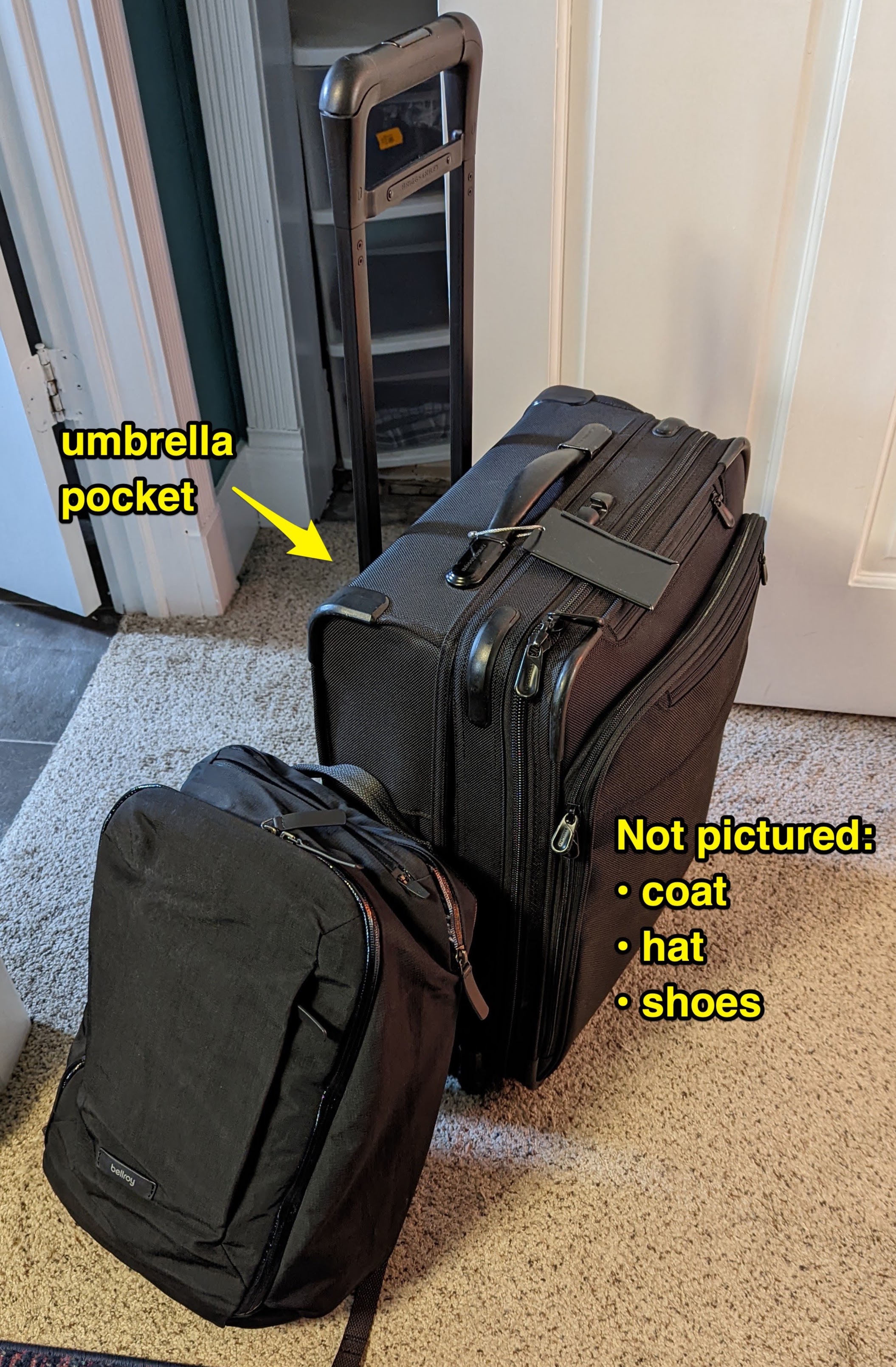 I spent my COVID lockdown watching a lot of YouTube videos about minimalist packing strategies.
I spent my COVID lockdown watching a lot of YouTube videos about minimalist packing strategies.
Lockdown hobby
During the first year of COVID, I was stuck in my rather isolating solo apartment. That same year, my boss at the time The inimitable Greg Jagiello. was focused on empowering the design team to include personal and mental health goals in our OKRs, The conceptually solid yet implementationally tricky goal-setting method of Objectives and Key Results. and encouraging us to actually pursue them. For me, that included goals to work in our other offices and from new locations.
I’ve always been a lightweight packer, but with one-off packing lists and inconsistent organization. After spending a year incrementally prototyping my packing approach, I came out of lockdown with a significantly optimized setup. It enabled me to experiment with digital nomading and sustainable travel strategies.
General lessons
I iterated through a lot of minimalist packing ideas to find a good balance for me. My primary lessons included the usefulness of packing cubes, switching a lot of clothing to merino wool, and creating checklist templates so I didn’t have to reinvent my packing needs for every trip.
Packing cubes. They’re great for organizing things, though not necessarily for saving space. For me they help with the mental (and literal) compartmentalization of what I’m keeping track of.
Bonus: When I get to a destintation, I can throw them on a shelf and keep using them as “drawers” during my stay.
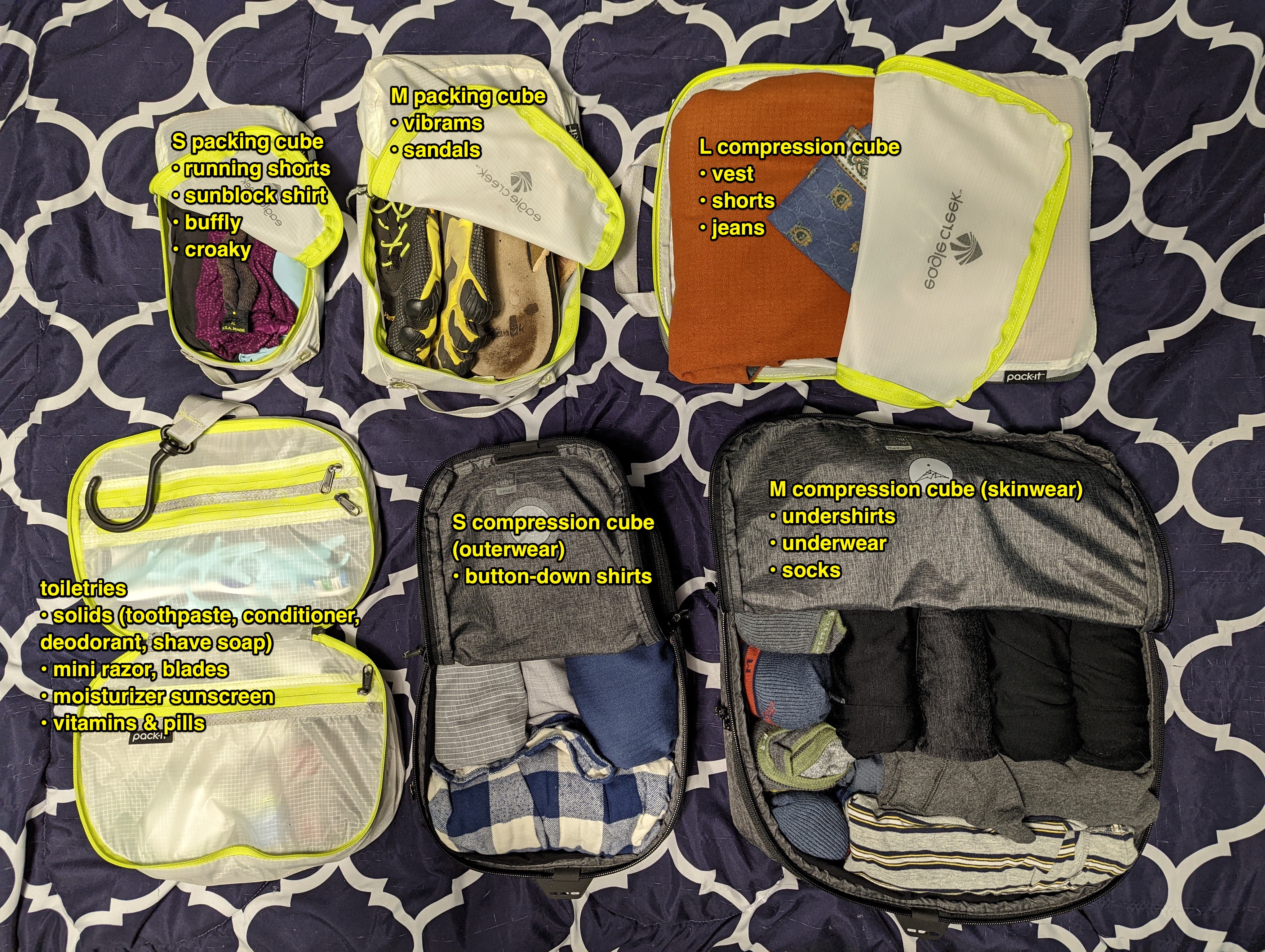
Rolling clothes. Rolling up all my clothes Also called the Ranger Roll or Army Roll method. simplified some things for me. I appreciate the compactness, ease of seeing and sorting everything, and marginal reduction in wrinkles.
Merino wool. Wool undershirts, overshirts, and socks are the way to go, with some caveats. For shirts and socks, they really do last forever and smell astoundingly less than cotton or synthetics. Undershirts and socks I can wear multiple days in a row, and I have a couple button-downs that I haven’t needed to wash for over a year each. When I heard about Wool & Prince’s 100-day challenge I thought it was nonsense, but actually it was an understatement.
Tradeoffs: Merino wool is notably expensive, and finding properly soft undershirts can be a challenge. Hands-down the softest and sturdiest merino t-shirts I’ve found are from Outlier’s selection. Wool also isn’t suitable for everything. I’ve stuck with synthetics for underwear, gloves and vests in particular. More comments on merino wool shortcomings.
Hand-washing. Getting used to washing things in the sink really changed the scale of what I need to pack. While I do still pack around a week of clothes (and count on a laundry machine at my destination), I discovered that I really only need three sets: wear one, wash another, let the third dry. With wool and wicking synthetics, most things air dry in an afternoon. And some months I did exclusively wash everything in the sink. At first I tried single-use detergent packets, but eventually I just went with shampoo or hand soap. It shifted my mindset from “packing everything to last for X days” to “a rotating wardrobe for an indefinite period of time.”
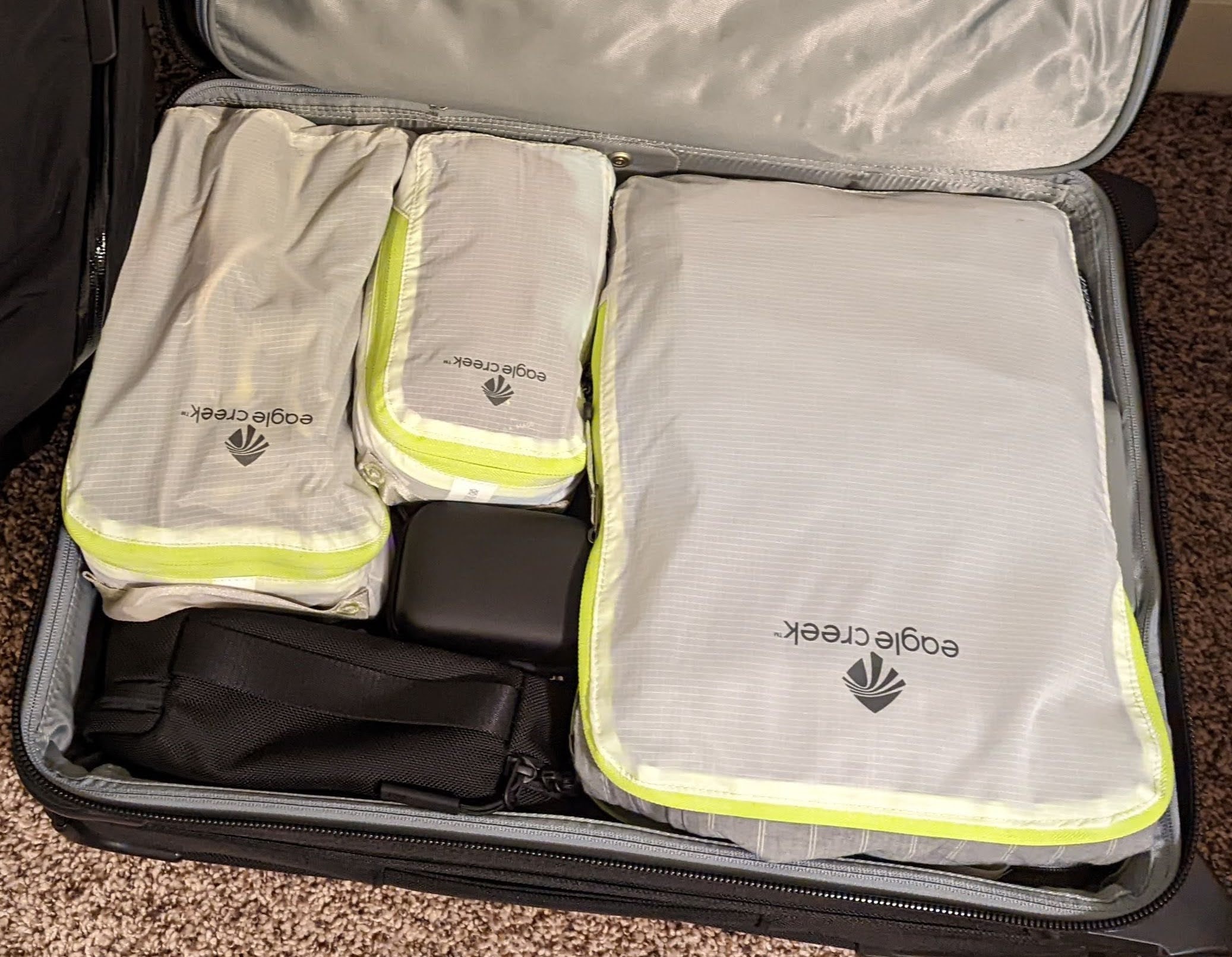 Everything fits
Solid toiletries. Having to keep a separate plastic bag for liquid toiletries really messes up the clean geometry of my suitcase, so I was motivated to remove the need for it at airport security. I gradually switched out all of my liquid toiletries. Specifically, toothpaste tablets, a conditioner bar (I haven’t used shampoo in years), and a shaving soap stick. YMMV.
Everything fits
Solid toiletries. Having to keep a separate plastic bag for liquid toiletries really messes up the clean geometry of my suitcase, so I was motivated to remove the need for it at airport security. I gradually switched out all of my liquid toiletries. Specifically, toothpaste tablets, a conditioner bar (I haven’t used shampoo in years), and a shaving soap stick. YMMV.
Bags and lists
My setup is primarily based around a suitcase and a backpack. As tempting as it was to try for a single backpack large enough for one-bag travel, my back is not as young as it used to be and physically carrying less is more relaxing.
Suitcase + backpack. A suitcase small enough for international carry-on, and a backpack small enough not to be obnoxious for day trips or commuting.
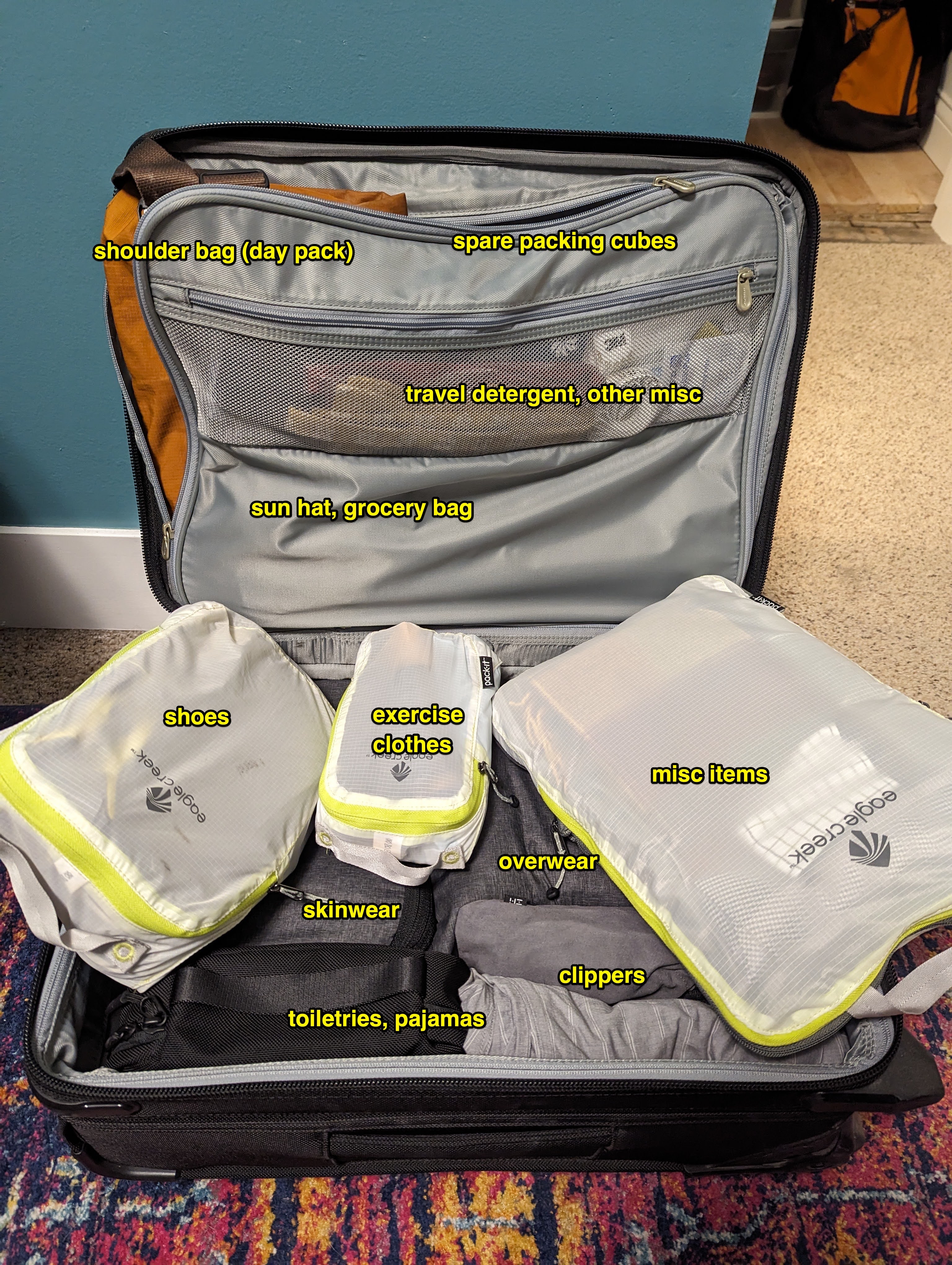 Nice and tidy
Nice and tidy
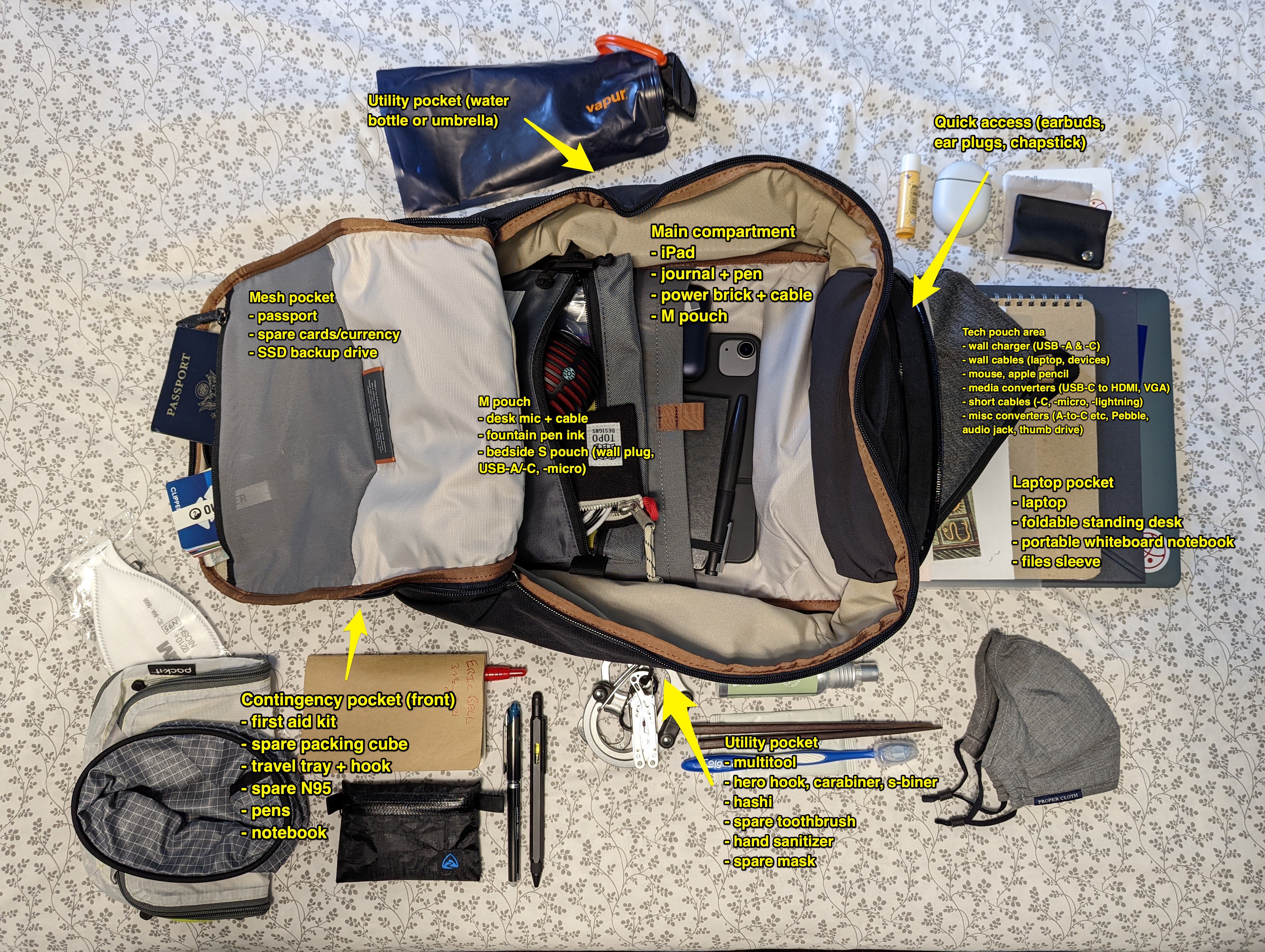
Sling. I do also have a sling for everyday use, but for travel days it gets packed away. Among other things, mine is big enough to hold my iPad. Commentary on what makes a sling useful.
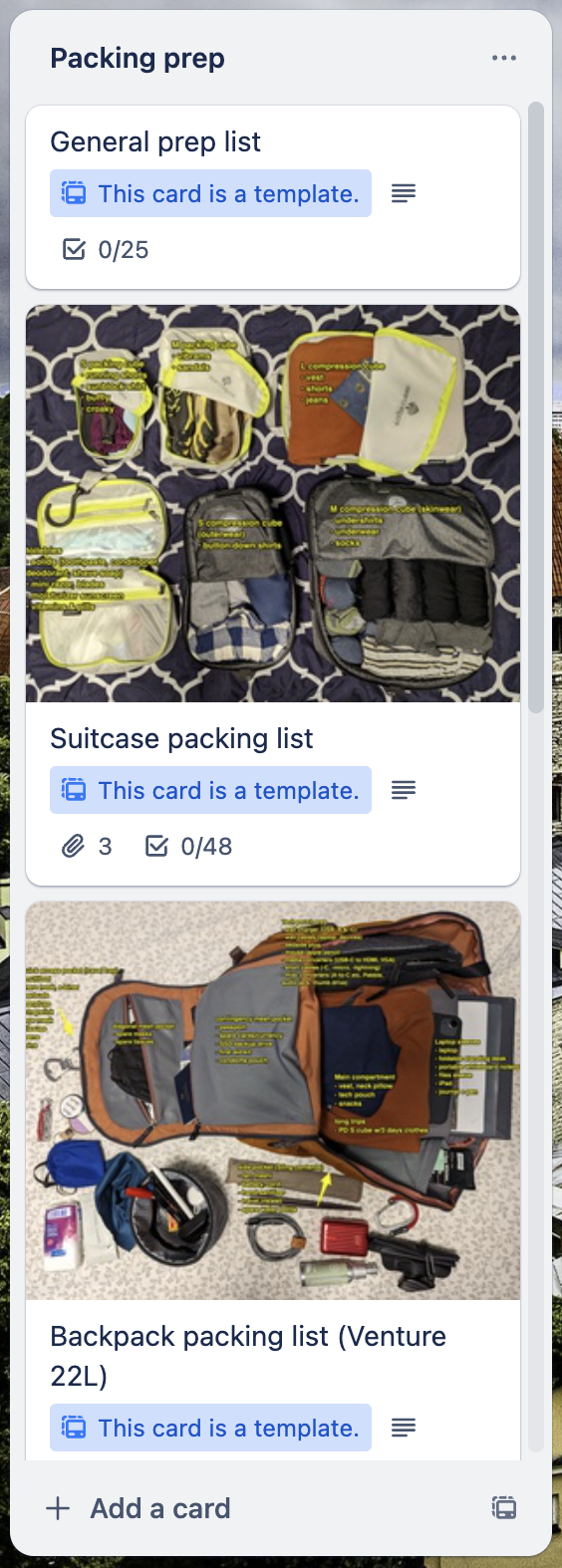 Checklists. I also made a packing list for each bag and turned them into Trello card templates, with the annotated photo as a thumbnail. Each checklist ends with “update the template with any changes”.
Checklists. I also made a packing list for each bag and turned them into Trello card templates, with the annotated photo as a thumbnail. Each checklist ends with “update the template with any changes”.
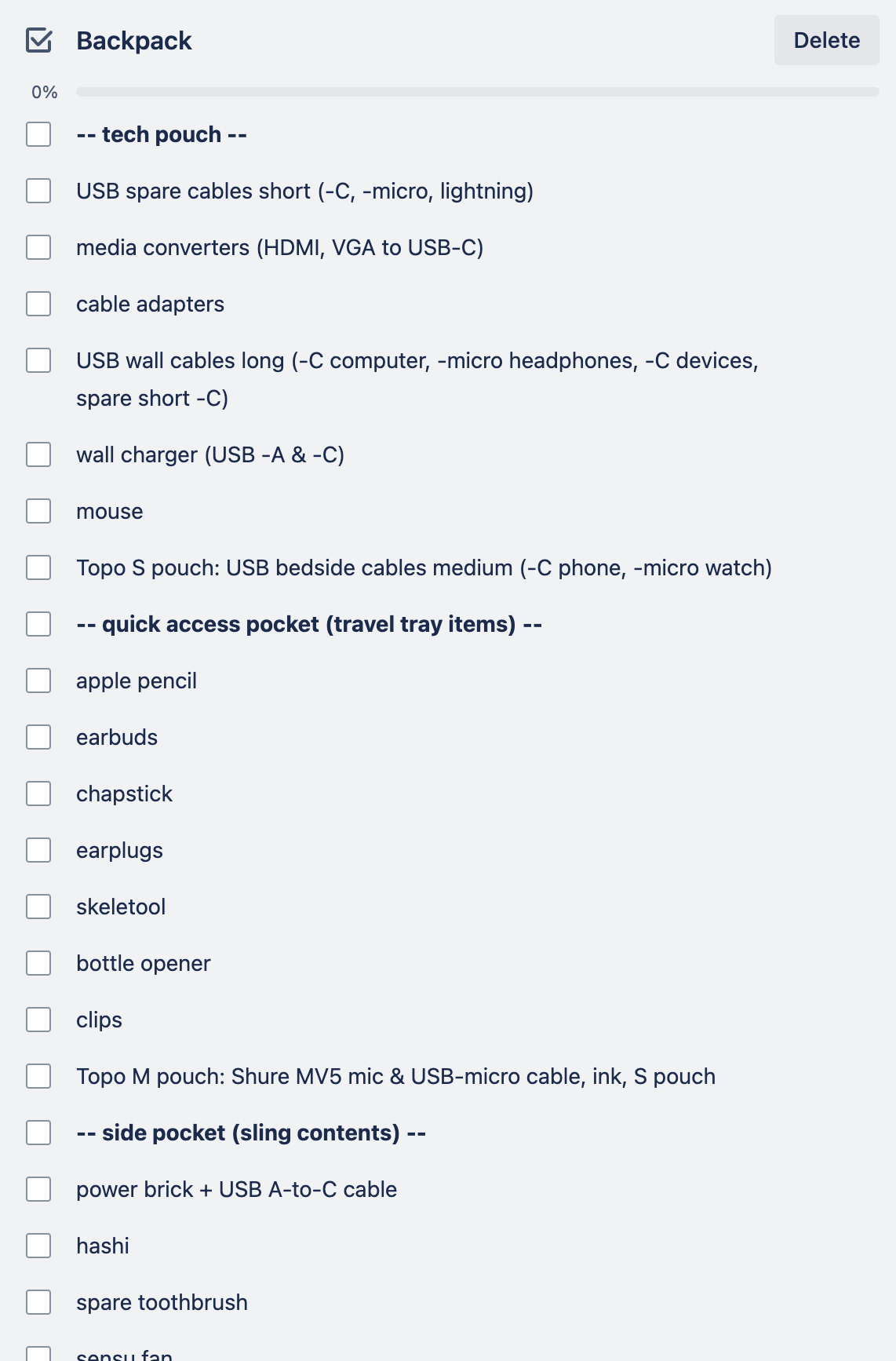
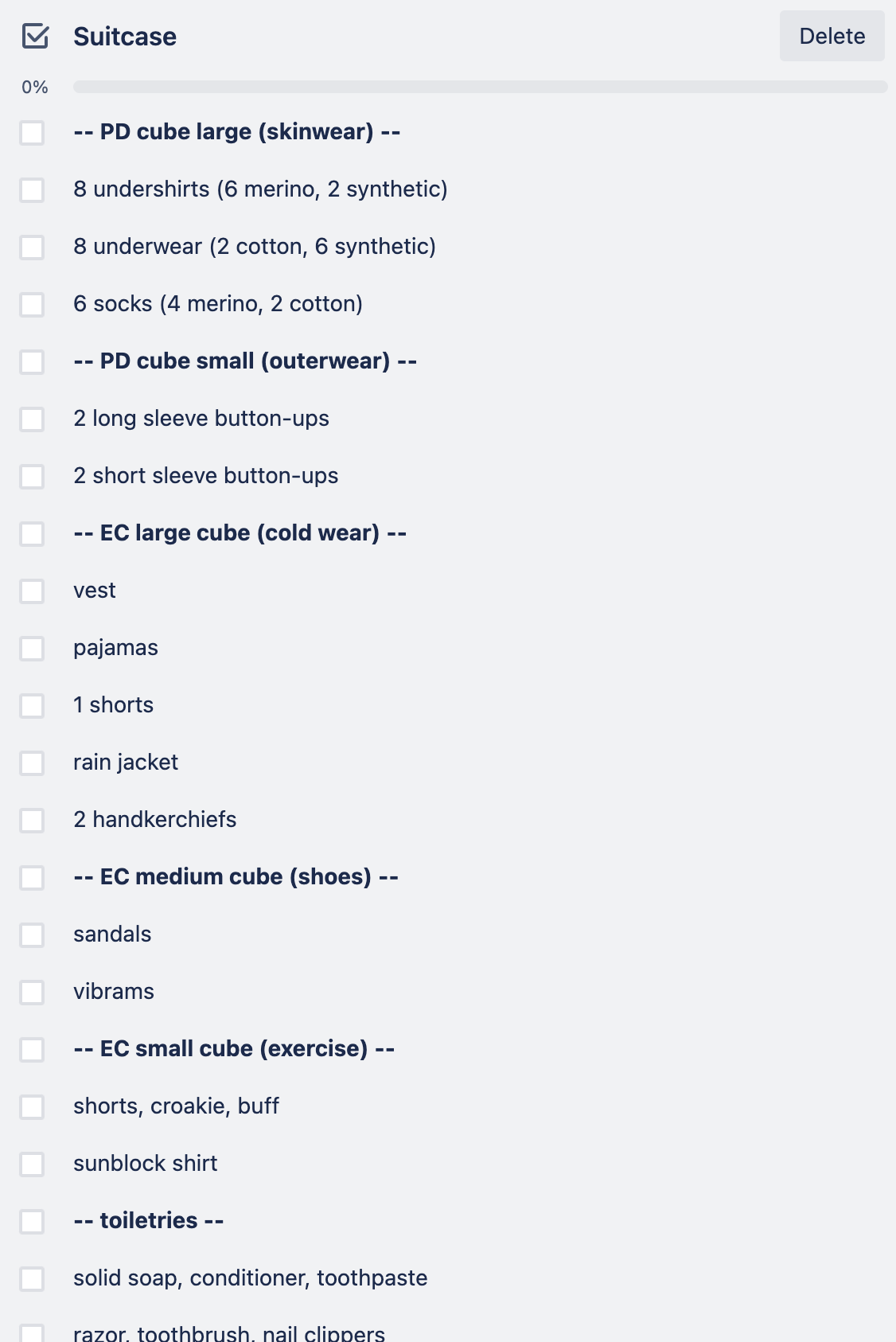
Other people’s advice
There are endless resources and videos on these topics, and if you have the stomach for them many are insightful.
- Pack Hacker’s digital nomad packing list. “Digital nomad”-oriented lists tend to be full of newer and niftier things, but there’s no real need to get specialized expensive stuff (except maybe wool). It’s more about the mindset and thinking through your needs. They have a budget travel packing list, too.
- A couple describes their list and lessons. Considerations for a two-person approach to packing for indefinite travel.
My own lessons and explorations will continue to evolve. Even while writing this, I noticed various sutble changes I’ve made since making the annotated packing photos, and I am still perennially tempted by the one-bag travel route. Happy trails.